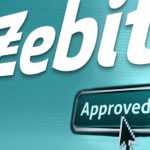What Does VantageScore Mean to You?

For years your credit score has been based on a system of scoring known as FICO, created by Fair Isaac. Just about every lender in the business uses the FICO system of scoring.
Now, though, the big three credit reporting companies: Equifax, Experian and TransUnion, want to revolutionize the credit scoring industry. Currently FICO bases its reports on data reported to them by one of these three companies. Now, though, the big three want to develop their own method of scoring and remove the need for FICO. Their new system of scoring is called VantageScore.
A Brief Look at VantageScore
VantageScore will look a bit different in its presentation from the traditional FICO score. For one thing, FICO uses a credit scoring range of 300-850 (the higher the score, the better). VantageScore, on the other hand, has a range between 501 and 990.
To make things even simpler, VantageScore marks its reports with a letter grade (from A to F, just like in school). The breakdown is as follows:
901-990 = “A”
801-900 = “B”
701-800 = “C”
601-700 = “D”
501-600 = “F”
Despite these cosmetic changes, the fundamentals for how the score is derived will remain quite similar to those used under the FICO system. The score will still be computed separately using data reported from one of the three companies, so it is still possible to get three quite different scores from the each of the three companies.
Advantages of VantageScore
According to Equifax, Experian and TransUnion, they created the new VantageScore to improve upon the current credit scoring system. Although there will still be differences between score reports between the three reporters, VantageScore claims to reduce the variance in figures by 30%, making each score a more accurate reflection of the borrowers’ credit risk.
VantageScore also lauds its ability to more accurately score the credit of so-called “young” creditors. Those who do not have long credit histories or large pools of data to draw from in determining credit risk. VantageScore claims that its system is much more accurate in gauging the risks of these sorts of creditors.
The introduction of VantageScore also introduces competition into the world of credit scoring. Today FICO is almost exclusively the scoring system used. By bringing in VantageScore it can be hoped that competition will work to make both systems more accurate as well as bring down prices.
One of the most confusing parts of credit reports these days is understanding how they are computed. This can be very confusing for consumers, making it difficult for them to know how to improve them. VantageScore promises to make the process of computing scores simpler and be more open about its scoring system with the public, making it easier for you and me to work with the new VantageScore. How true this is remains to be seen, however.
Problems With VantageScore
Don’t think that everything about VantageScore is flowers and roses. There are some major problems with the system. For one thing, it is not that much more accurate than the currently reigning FICO score. Considering how entrenched FICO is in our credit system, it could be very difficult for VantageScore to make an impact.
Currently FICO is used by about 80% of the largest banks, and is a major factor in 75% of mortgage decisions. That is a very large number. These banks and lenders are not going to be too excited about signing onto a new system, or paying the high costs of switching their business to work with the system. This could definitely pose problems for VantageScore.
There are also concerns that VantageScore could violate anti-trust laws. Since the scoring system is designed and run by the three big credit reporting companies, it could be seen as a monopolistic trust completely dominating the credit scoring field combined with credit reporting, removing competition. At the moment, however, there is little talk from the government of treating VantageScore in this light.
VantageScore and You
Although we could look at the introduction of VantageScore as a welcome influx of competition, it may prove to only make things more complicated for you. Having to scoring systems out there means it is only that more difficult to know what score your bank is going to be looking at when you go in for a loan. More numbers to keep track of, more credit reporting information to understand.
Being optimistic, though, this is still good in the long run. The competition will bring innovation that hopefully will make the credit scoring industry much less complicated, and also bring down prices. This is always a good thing for you. If VantageScore proves to be all it promises to be, it will be a simpler scoring system that gives you more accurate information right away. For now, however, only time will tell how VantageScore will work out.






